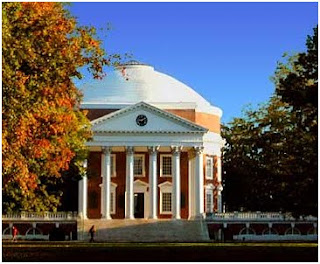Last week in UK universities declared that their seats are full.But now they are worried due to the fear that in next session they will have 20% less students as compared to previous sessions.
The "house full" sign was visible at most of the country's top universities last week as students snapped up the few spare places in record time.
In April, the government changed the immigration system and introduced a points-based system for, among others, international students applying for study visas. Well, So far, it has not been a success, as far as many in the sector can tell. To get a visa, international students are now expected to show that they can afford their tuition fees 28 days before they apply, have at least an extra £600 a month and £400 for each dependant in living expenses, and to keep it all in a bank account in their own name for the first year of their study. They also need to show a biometric identity card and should have received their exam results by the time they apply.
Agents who apply for UK visa on behalf of students are finding these these requirements too much and these take take too much time.
Many more student visas are being rejected than in previous years, they say, encouraging students to give up on the UK and opt for Australia or the US for their higher education instead. Universities hoped that they would find out last Thursday exactly how many student visas had been accepted since the new immigration system came in. But, when the Home Office and the Office for National Statistics published data on immigration, student visa data for the second quarter of this year was nowhere to be found.
Diana Warwick, chief executive of Universities UK, the vice-chancellors' umbrella group, says: "Unfortunately, the information published is of limited value to us in assessing how effectively the new immigration system is working. It does not provide data on visa applications and their approval and refusal rates under the different tiers of the new system.”
"This is our busiest period for student visa applications and there are worrying indications of problems with the operation of the system overseas. We know the UK Border Agency is working hard to process applications in time and we are continuing to work with them to identify and tackle issues raised by universities.
"We remain concerned, however, that the system may delay or deter international students who wish to study in the UK." .
Anecdotal evidence indicates numbers of these students are down as much as 20%, in some cases, on what course leaders were expecting this year, says Dominic Scott, chief executive of the UK Council for International Student Affairs.
Brendan Webb, sales and marketing director of Study Group, which runs classes at colleges and universities for international students who want to improve their English, says overseas students are either "not turning up or turning up very, very late" because of the visa problems.
"We have had to postpone some courses by two weeks," he says. "We still don't know when they are going to arrive or be rejected at the border gates. The agents in our regional offices across the world say there have been delays. They have been shouting and screaming about them."
It is estimated that there are more than 340,000 non-EU students at UK universities. They generate more than £1.25bn in fees, spend a further £1.6bn in living costs and contribute a total of around £8.5bn to the British economy each year.
Alasdair Murray, director of Centre Forum, a liberal thinktank, says: "While the short-term damage in terms of disruption and unfilled places could be considerable, it is the longer-term impact which is the real worry.
"Aside from the overall economic benefit generated by overseas students, the fees help cross-subsidise their UK counterparts. The government faces depriving universities of vital funds at the very moment it is scrabbling around for cash to help tens of thousands of extra UK applicants escape the recession. Universities fear that any ongoing fall in overseas student numbers will only exacerbate the looming problem posed by much tighter public spending."
Webb says there is going to be a "big black hole ahead".
"This was going to be the year for the UK in terms of opportunities," he says. "Visa applications are up, but down in Australia, because the UK was seen as more affordable and providing a much wider choice. This is a massive missed opportunity.”
Statements Courtesy guardian.co.uk
There is no doubt that UK has tightened the rules which will lead to depression in UK market regarding students.The rules are too much and take long to be fulfilled up.Well if this scenario remains then the majority of students will move over to USA or other favourite study destinations.





